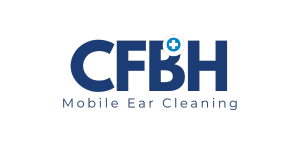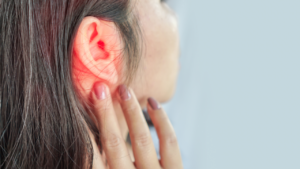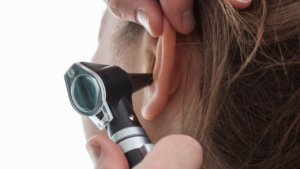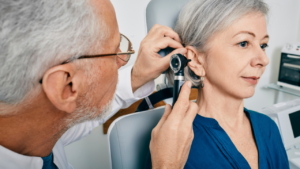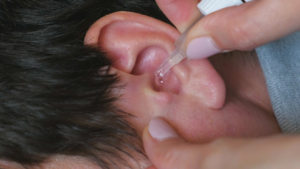
Ear wax removal is a common issue that many people face, but is it possible to get it done for free on the NHS? In this article, we will explore the necessity of ear wax removal, the criteria for free ear wax removal on the NHS, and the alternatives available. We will also discuss the risks of removing ear wax at home and provide tips on how to safely do so. Stay tuned to learn more about when you should seek medical advice for ear wax removal.
Key Takeaways:
- Ear wax removal is the process of clearing the ear canal of excess wax buildup that can cause discomfort and hearing difficulties.
- While ear wax removal is necessary for some individuals, free services on the NHS are only available to those who meet specific criteria.
- Alternatives to free ear wax removal on the NHS include over-the-counter products and private services, but it’s important to consider the risks before attempting removal at home.
What is Ear Wax Removal?
Ear wax removal is the process of eliminating excessive earwax from the ear canal using specialised techniques or tools.
Excessive earwax can often cause discomfort, affecting one’s hearing ability and potentially leading to ear infections if left untreated. Therefore, it is crucial to understand the various methods used for ear wax removal, such as irrigation, ear drops, or manual removal by a healthcare professional. Keeping ear hygiene in check is essential to prevent build-up and maintain optimal ear health. Regular check-ups with an audiologist or healthcare provider can ensure proper care to avoid complications related to untreated earwax accumulation.
Why is Ear Wax Removal Necessary?
Ear wax removal becomes necessary when there is a build-up of earwax causing symptoms like hearing loss, discomfort, or earaches.
Excessive earwax can block the ear canal, resulting in reduced ability to hear clearly. This blockage can also lead to ringing in the ears, dizziness, and even ear infections. When earwax accumulates and hardens, it can create a barrier that interferes with sound waves entering the ear, affecting overall hearing quality. Seeking timely intervention for earwax removal is crucial in avoiding potential complications and ensuring optimal ear health.
Can You Get Ear Wax Removal for Free on the NHS?
The NHS offers free ear wax removal services to eligible patients.
These services are essential as they ensure that individuals with ear wax buildup receive proper care and treatment to prevent complications such as hearing loss or discomfort. Understanding the benefits of accessing NHS services for ear health is crucial for maintaining overall well-being.
What is the Criteria for Free Ear Wax Removal on the NHS?
To qualify for free ear wax removal on the NHS in England, patients must meet specific criteria.
The National Health Service (NHS) in England offers free ear wax removal services to individuals who meet certain eligibility criteria, as determined by healthcare experts. These criteria typically include instances where the patient experiences symptoms like hearing loss, earache, tinnitus, or a feeling of fullness in the ear due to excessive wax buildup.
What Are the Alternatives to Free Ear Wax Removal on the NHS?
When free NHS services are unavailable, alternatives to ear wax removal include over-the-counter products or private services offered by clinics.
It’s essential to explore these options when dealing with ear wax build-up, as blockages can lead to pain, dizziness, and even hearing loss. Over-the-counter solutions such as ear drops can be effective in softening the wax, making it easier to remove. Private clinics offer professional ear wax removal using innovative techniques like microsuction or irrigation. These services can provide a quick and safe solution, especially when confronting severe symptoms. Remember, choosing a reliable service is crucial to ensure proper care and avoid complications.
Over-the-counter Ear Wax Removal Products
Over-the-counter ear wax removal products, including olive oil and almond oil drops, can help soften earwax for easier removal as recommended by pharmacists.
Pharmacists often suggest using olive oil or almond oil drops as a gentle way to loosen earwax buildup, making it easier to remove. These products work by softening the hardened wax, facilitating its expulsion from the ear canal.
It is essential to follow the recommended dosage and application instructions provided on the product packaging or by the pharmacist. Typically, a few drops are administered into the ear, allowing the solution to sit for several minutes before rinsing or flushing the ear with warm water.
Private Ear Wax Removal Services
Private ear wax removal services offered by specialist clinics provide personalised care and precise methods for wax removal.
These clinics prioritise the comfort and safety of their patients, utilising state-of-the-art equipment and techniques to ensure effective wax removal without causing harm to the delicate ear canal. Patients can benefit from the expertise of trained professionals who can accurately diagnose the type of ear wax build-up and tailor the removal process accordingly.
By opting for private ear wax removal services, individuals avoid the risks associated with at-home removal methods, such as pushing the wax further into the ear or damaging the eardrum. These specialised clinics offer a comprehensive approach to ear care, focusing on gentle yet thorough wax removal for optimal hearing health.
What Are the Risks of Removing Ear Wax at Home?
Removing ear wax at home poses risks such as pushing wax deeper, damaging the ear canal, or causing infection due to unsterilised tools.
One of the primary dangers of attempting DIY ear wax removal is the potential of inadvertently pushing the wax further into the ear canal. This can not only worsen the blockage but also make it harder to remove. Using improper tools or techniques may lead to irritation and damage to the delicate skin in the ear canal, potentially resulting in pain or even injury. The risk of infection is also a significant concern, as unsterilised instruments can introduce bacteria into the ear, leading to various ear infections.
Pushing Ear Wax Further into the Ear Canal
One of the risks of improper ear wax removal at home is the inadvertent pushing of wax further into the ear canal, leading to blockages and discomfort.
When ear wax is pushed deeper into the ear canal, it can exacerbate the existing issue by creating a more significant blockage. This blockage not only hampers hearing but also increases the risk of ear infections.
The complications arising from such actions may include severe pain, dizziness, ringing in the ears, and even temporary hearing loss. In some cases, the ear wax buildup can become so dense that it requires professional intervention for safe and effective removal.
Damaging the Ear Canal
Attempting to remove ear wax incorrectly at home may result in damaging the delicate ear canal tissues, potentially leading to pain, bleeding, or infection.
When the ear canal is damaged, individuals may experience symptoms such as earaches, drainage from the ear, or changes in hearing. Improper ear wax removal can push the wax deeper into the canal, causing impaction and further complications.
Seeking professional medical assistance is imperative if any signs of ear canal damage or infection occur. Ear specialists can provide safe and effective methods to remove excess wax and treat any resulting issues, preventing long-term consequences.
Infection from Unsterilised Tools
Using unsterilised tools for ear wax removal at home can introduce bacteria and pathogens, leading to ear infections and potential complications.
Ear infections resulting from DIY ear wax removal using unsterilised tools can vary from mild discomfort to severe pain and even hearing loss if left untreated. Common types of infections that may arise include external otitis (swimmer’s ear), middle ear infections (otitis media), and in severe cases, mastoiditis. These infections can cause symptoms such as ear pain, itching, discharge, and even fever. It is crucial to prioritise hygiene and safety in ear care practices to prevent such risks and maintain optimal aural health.
How to Safely Remove Ear Wax at Home?
Safely removing ear wax at home involves using methods like warm oil to soften the wax before seeking medical advice if complications persist.
Applying warm oil is a gentle and effective way to loosen stubborn ear wax, making it easier to remove without causing any harm.
Simply tilt your head to the side and use a dropper to carefully place a few drops of warm oil into the ear canal. Allow the oil to sit for a few minutes to soften the wax before gently flushing it out with warm water.
Do not insert any objects into the ear canal to avoid injury and always use lukewarm oil to prevent burns.
Soften the Ear Wax with Warm Oil
Softening ear wax with warm oil is a recommended method to facilitate its removal by reducing hardness and making the process safer and more comfortable.
When using warm oil to soften ear wax, it helps to alleviate any discomfort or pain associated with hardened wax build-up. Warm oil can also help lubricate the ear canal, aiding in the natural expulsion of softened wax.
To apply warm oil safely, simply warm a small amount of olive or mineral oil, ensuring it is not too hot, and gently pour a few drops into the ear. Let the oil sit for a few minutes to soften the wax before tilting your head to allow the oil and wax to drain out.
Use an Ear Wax Removal Kit
Utilising an ear wax removal kit can offer a safe and effective way to manage ear wax accumulation at home, providing specialised tools for the process.
These kits typically come with gentle ear drops to soften the wax, along with tools like ear syringes or extraction loops to carefully remove buildup. By using these kits, individuals can avoid the risks associated with improper ear cleaning methods, such as using cotton buds, which can push wax deeper into the ear canal.
The benefits of ear wax removal kits extend beyond just convenience, as they are designed to be user-friendly and reduce the need for frequent visits to healthcare professionals for routine ear wax removal. It’s important to follow the instructions carefully and avoid using the tools if there are any signs of infection or injury.
Seek Medical Advice
Seeking medical advice from an ear care expert or specialist is crucial for cases where home removal methods are insufficient or if complications arise.
This professional guidance is particularly important when dealing with severe wax build-up, persistent ear pain, sudden hearing loss, or any sign of infection. A trained professional can properly assess the situation and recommend the best course of action, which may involve specialised tools or procedures. It is essential to never attempt to remove deep or impacted ear wax on your own, as this can lead to further complications and potential damage to the ear canal.
When Should You See a Doctor for Ear Wax Removal?
It is advisable to see a doctor for ear wax removal if experiencing persistent symptoms like hearing loss, pain, or discomfort, as recommended by RNID.
Professional ear wax removal is crucial in cases where home remedies are ineffective or exacerbate the issue. Ear wax accumulation can lead to further complications like dizziness, ringing in the ears, or even infections if left unaddressed. Seeking medical attention promptly is imperative when facing severe symptoms such as severe ear pain, bleeding, or a sudden decrease in hearing. By following the guidance provided by organisations such as RNID, patients can access accurate information on the importance of proper ear care and when to seek professional help.
